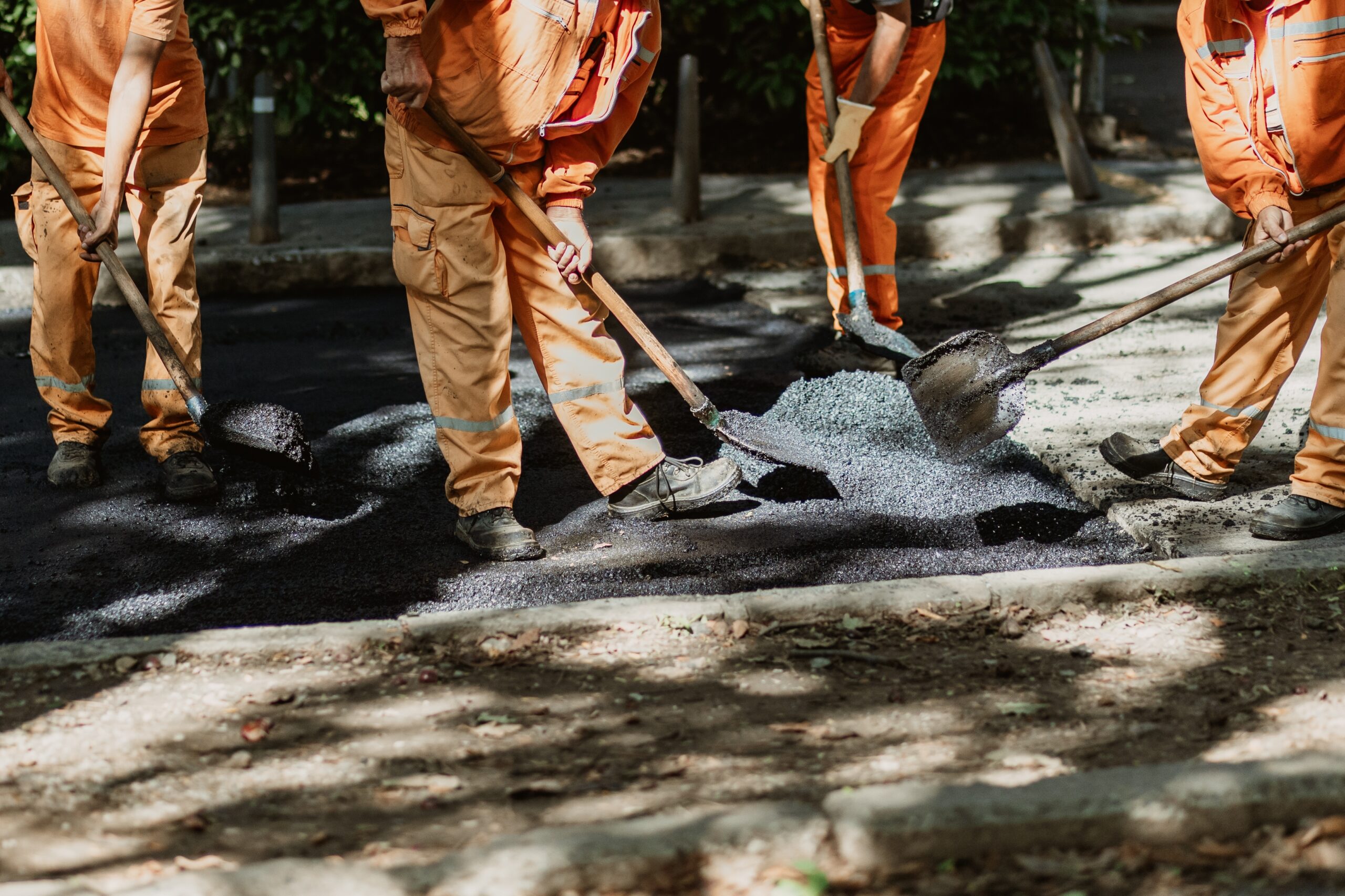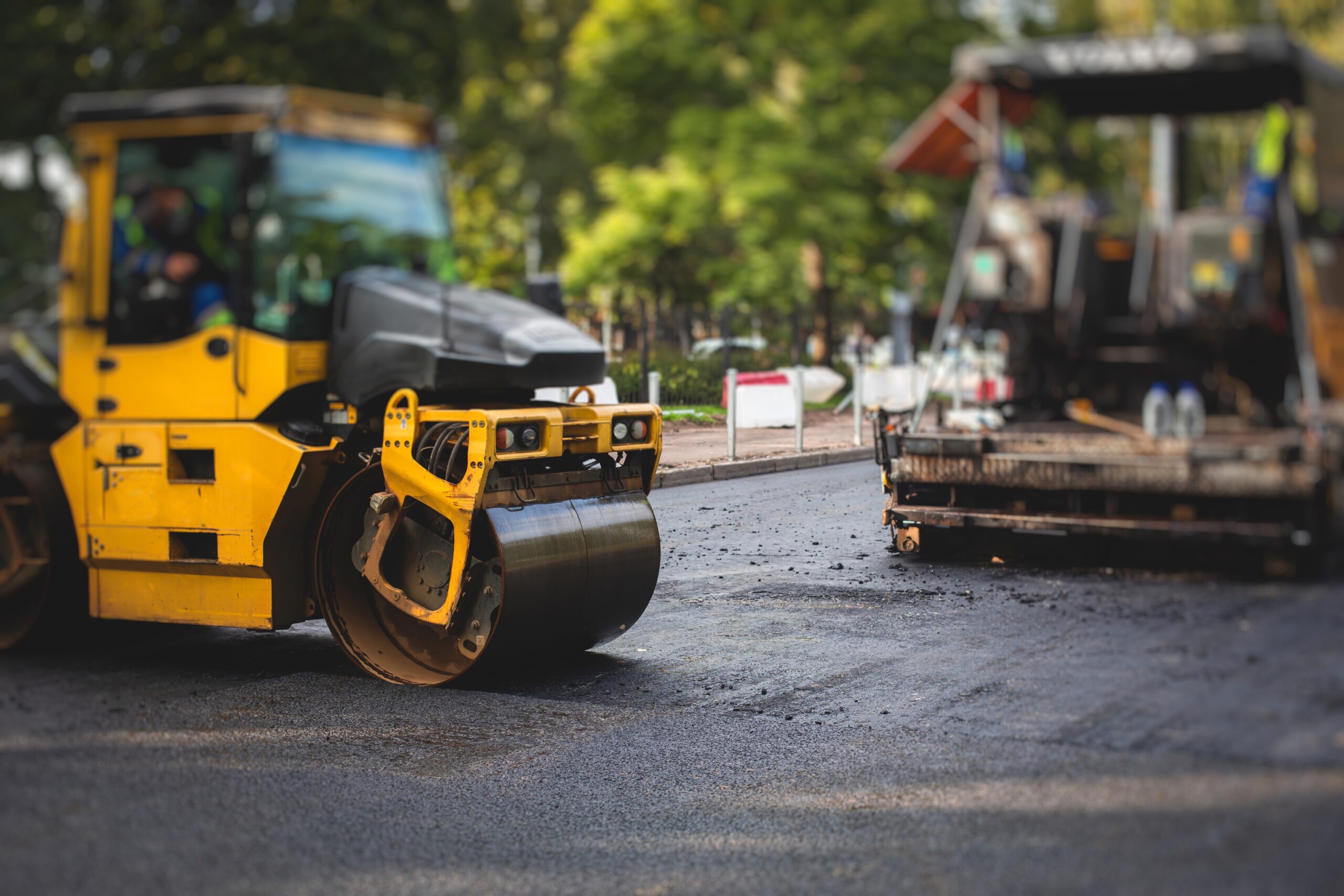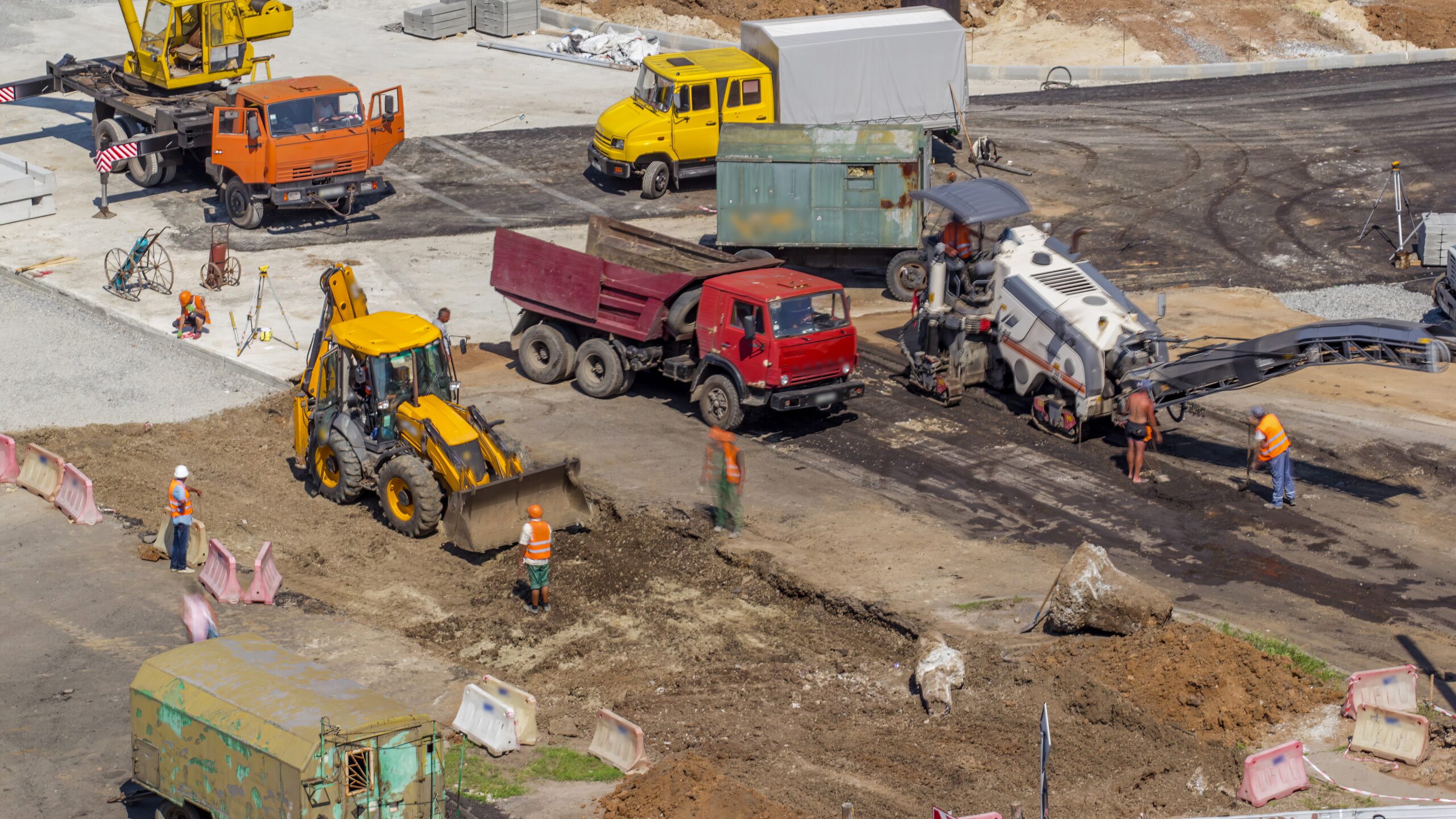Your asphalt surfaces are a significant investment, directly impacting your property’s safety, curb appeal, and overall value. Whether it is a sprawling commercial parking lot or a vital access road, keeping the pavement in optimal condition is not just about appearances; it is about smart asset management.
According to AAA, potholes alone cost U.S. drivers $26.5 billion in repairs in 2021, with the average repair costing nearly $600. This highlights just how costly neglected asphalt can become.
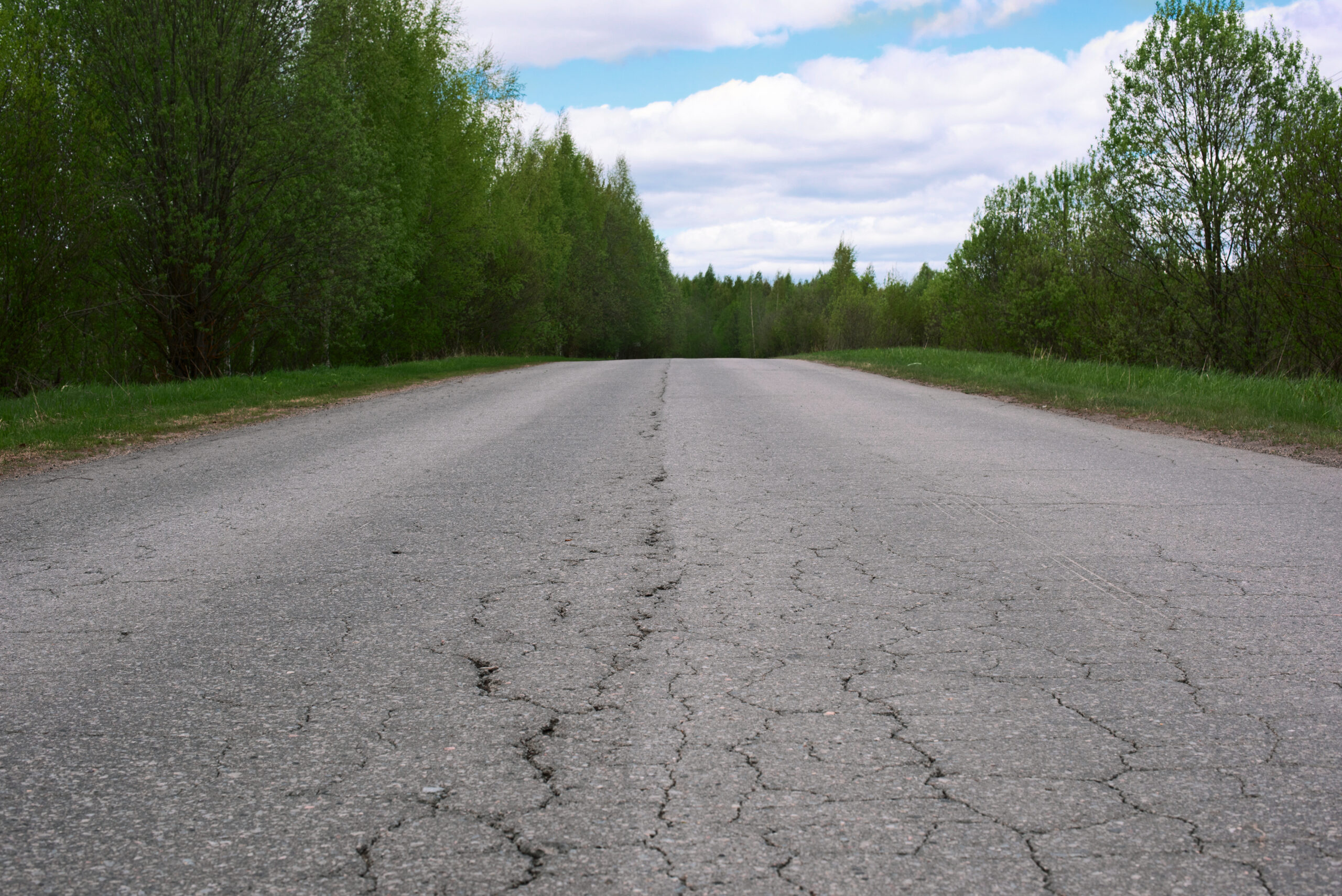
Understanding the early warnings of asphalt distress can save you from costly and extensive repairs down the line. This article will guide you through the top signs that your asphalt needs immediate attention, empowering you to protect your investment and ensure the longevity of your pavement.
Why Paying Attention to Your Asphalt Pays Off
Proactive maintenance is the cornerstone of extending the lifespan of your asphalt surfaces. Minor signs of wear and tear today can quickly escalate into significant structural problems, leading to significantly higher repair costs and potential liability issues.
According to the FAA, early detection and repair prevent “extensive and costly repairs,” while pavement preservation experts confirm that proactive maintenance is the most cost-effective way to extend pavement life
By regularly inspecting your pavement and addressing issues as they arise, you can prevent further damage and maintain a safe, attractive, and valuable property.
The Long-Term Value of Proactive Maintenance
Early intervention is not just about fixing a crack or a pothole; it is about preserving the underlying foundation of your asphalt. When minor issues are neglected, they allow water to penetrate the surface, weakening the sub-base and leading to more severe and widespread damage. A proactive approach to asphalt maintenance not only saves you money in the long run but also minimizes disruption to your business operations.
Regular maintenance ensures that your property remains safe for both vehicles and pedestrians, reducing the risk of accidents and potential legal claims. Furthermore, a well-maintained property enhances curb appeal, leaving a positive and lasting impression on clients, customers, and tenants.
How much can I really save with proactive asphalt maintenance?
Proactive maintenance, like crack sealing and sealcoating, can extend the life of your pavement by several years. Addressing a small crack might cost a few dollars per linear foot, while waiting for it to become a pothole or a large area of alligator cracking could lead to repairs costing hundreds or thousands of dollars, representing a significant long-term saving.
Cracks That Keep Growing
Asphalt cracking is one of the most common and visible signs of pavement distress. While a small, isolated crack may seem insignificant, it is often the first indication of underlying structural issues. Cracks compromise the integrity of the asphalt, creating a pathway for water to infiltrate the sub-base and cause further deterioration.
- Alligator Cracking: Also known as fatigue cracking, this pattern of interconnected cracks resembles the skin of an alligator. It is a serious sign of structural failure, indicating that the damage extends deep into the sub-base. A combination of heavy traffic loads and a weakened foundation typically causes alligator cracking.
- Linear Cracks: Also known as longitudinal cracks, these run parallel to the direction of traffic. They are often caused by pavement fatigue, thermal stress, or poorly constructed joints. If not sealed, they will widen over time and allow significant water intrusion.
- Edge Cracks: These appear along the unsupported edges of the pavement. They are typically caused by a lack of shoulder support, poor drainage, or heavy traffic loads near the edge of the road or parking lot. They can cause the pavement edge to crumble away, narrowing the usable surface area.
These types of cracks, whether alligator, linear, or edge, are considered key indicators of serious structural problems. The Federal Highway Administration’s Distress Identification Manual confirms that fatigue (alligator) cracking is a structural distress that often leads to potholes and further pavement breakdown.
Is it okay to fill a small crack myself?
While DIY crack fillers are available for very minor hairline cracks, professional crack sealing services are recommended for anything wider than a quarter of an inch.
Professionals use hot rubberized sealant that properly bonds to the asphalt and flexes with temperature changes, providing a much more durable and effective seal than cold pour products.
Potholes Forming in High-Traffic Areas
Potholes are more than just a nuisance; they are a clear indication of advanced asphalt deterioration. These bowl-shaped depressions form when the surface of the pavement breaks away, creating a hazardous and unsightly condition.
According to the Transportation Research Board, potholes typically initiate where pieces of asphalt are displaced and then expand as water weakens the base and subgrade under repeated traffic.
Ignoring potholes can accelerate damage, create safety hazards, and harm your brand image. Asphalt repair services help eliminate potholes quickly and professionally before they cause bigger problems.
The Dangers of Ignoring Potholes
Ignoring potholes can have serious consequences. As traffic continues to drive over the pothole, the edges break down, and the hole grows larger and deeper.
This not only increases the cost and complexity of the repair but also accelerates the overall deterioration of the surrounding pavement. Potholes can cause significant damage to vehicles, including tire blowouts, bent rims, and suspension problems. For commercial property owners, the presence of potholes can create a negative impression and deter potential customers.
The Federal Highway Administration notes that repair effectiveness depends heavily on method, with techniques like semipermanent patches or spray injection often outperforming “throw-and-roll” fixes.
What causes a pothole to form so quickly?
Potholes form when water seeps into the subbase through cracks in the asphalt. During freeze-thaw cycles, this trapped water expands and contracts, weakening the ground beneath the pavement. The weight of traffic then causes the weakened surface to collapse, forming a pothole that can appear to grow overnight.
Faded Asphalt That’s Turning Gray
If your once-rich, black asphalt has faded to a dull gray, it is a sign of more than just age. This color change is a visible indicator of oxidation, where the asphalt binder hardens and becomes brittle.
According to the Federal Highway Administration, oxidation increases stiffness and brittleness in asphalt binders, making the surface more prone to cracking and traveling.
- Understanding Oxidation: The asphalt binder is a petroleum product rich in oils that give it flexibility. Sun and air cause these oils to evaporate and harden, making the asphalt brittle.
- Increased Brittleness: Oxidized asphalt loses its ability to flex under traffic loads, making it much more susceptible to cracking and surface erosion, a process called raveling, where small stones become dislodged.
- Restoring Protection with Sealcoating: Sealcoating Services is a preventative maintenance procedure that applies a protective layer to the surface. This sealant replenishes the oils lost to oxidation, restores the rich black color, and provides a barrier against water, chemicals, and UV rays, significantly extending the pavement’s life.
According to the U.S. Geological Survey, manufacturers commonly recommend reapplying sealcoats every 2–3 years to maintain protection and extend pavement life.
Water That Pools Instead of Drains
Standing water on your asphalt surface is a major red flag that should never be ignored. Proper drainage is crucial for the longevity of your pavement.
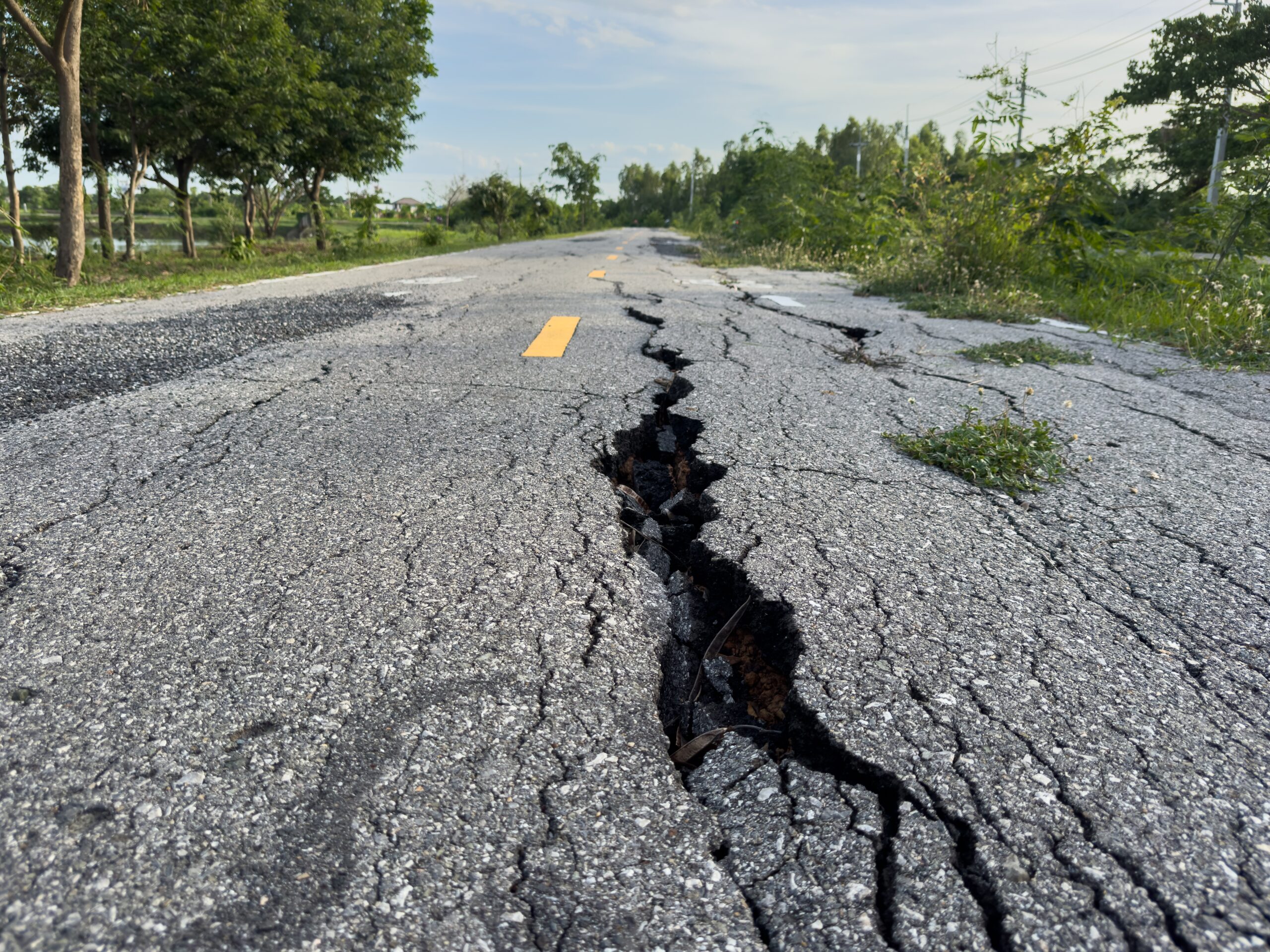
Addressing drainage issues is a critical step in any asphalt maintenance plan. That’s why drainage protects your asphalt and helps prevent long-term structural failure.
The Consequences of Poor Drainage
Water pooling can be caused by a variety of factors, including improper grading, a settled sub-base, or clogged drainage systems. When the sub base becomes saturated with water, it loses its ability to support the weight of traffic, leading to the formation of ruts, depressions, and potholes.
In colder climates, the water can freeze and expand, causing the pavement to heave and crack. Addressing drainage issues is a critical step in any asphalt maintenance plan. This may involve regrading the surface, installing or repairing drainage systems, or a combination of both.
Can a new sealcoat fix my drainage problem?
No, sealcoating will not fix a drainage problem. Sealcoating is a surface treatment and does not alter the slope or grade of the asphalt. If you have standing water, the underlying grading or sub-base issue must be addressed through patching, milling, or regrading before a sealcoat is applied.
Uneven Surfaces, Dips, or Soft Spots
A smooth, even surface is a sign of healthy asphalt. When you start to notice uneven surfaces, dips, or soft spots in your pavement, it is a clear indication of underlying problems with the sub-base. These issues are often caused by water infiltration, poor compaction during construction, or the decomposition of organic material in the sub-base.
- Sub Base Failure: The most common cause of dips and soft spots is a weak or saturated sub base. When the foundation can no longer support the weight of the asphalt and the traffic on it, the surface will begin to sink or deform.
- Safety Hazards: Warping or sinkage creates tripping hazards for pedestrians and can cause drivers to lose control of their vehicles. These are significant liability concerns for any property owner.
- Professional Assessment is Key: An experienced contractor can determine the root cause of the unevenness. They will assess the condition of the sub-base and recommend the correct repair, which could range from a simple patch to a more extensive full-depth reclamation.
What does it mean if an asphalt spot feels soft or spongy?
A soft or spongy spot is a critical warning sign that the sub-base beneath the asphalt is saturated with water and has failed. This area lacks structural support and will quickly deteriorate into a pothole. It requires immediate attention to remove the damaged section and repair the foundation.
Edges Starting to Crumble
The edges of your asphalt are particularly vulnerable to damage, especially if they are not properly supported by curbs or shoulders. Crumbling edges, also known as edge failure, occur when the outer edges of the pavement break away and disintegrate.
The Importance of Edge Support
This type of damage is often caused by heavy traffic loads near the edge of the pavement, water infiltration, or a lack of lateral support. Crumbling edges not only detract from the appearance of your property but also create a safety hazard and can lead to the progressive deterioration of the entire pavement structure.
Proper edge support from concrete curbs or shoulders is essential for preventing this. If you notice the edges of your asphalt are starting to crumble, they should be repaired promptly to prevent the damage from spreading inward.
How do you repair crumbling asphalt edges?
Repairing crumbling edges typically involves cutting back the damaged area to stable pavement, ensuring the base is solid, and then patching it with new hot mix asphalt. For long-term prevention, installing concrete curbing can provide the necessary lateral support to prevent future edge failure.
The 25% Rule: When It’s Time to Replace, Not Repair
While many asphalt problems can be addressed with repairs, there comes a point when replacement becomes the more cost-effective and practical solution. If more than 25% of your surface is compromised, consider overlay vs. full replacement for better long-term ROI.

According to the Federal Highway Administration, when pavement deterioration is widespread, overlay or full reconstruction is often more economical than continual patching.
As a general rule of thumb, if more than 25% of your asphalt surface is covered in interconnected or severe damage like alligator cracking, it is usually more economical to replace or resurface the entire pavement rather than attempting to patch numerous problem areas.
- Diminishing Returns: Continuously patching a failing pavement can become a costly, never-ending cycle. The patches themselves can create seams where water can enter, and the old pavement will continue to degrade around them.
- Resurfacing vs. Replacement: If the foundation is still stable, an asphalt overlay (resurfacing) might be an option. This involves adding a new layer of asphalt over the old one. If the foundation has failed, a full replacement is necessary, which consists of removing the old asphalt and sub-base to build a new, stable structure.
- Long Term Investment: While the upfront cost of a full replacement is higher, it provides a brand new, structurally sound pavement that will last for many years with proper maintenance, ultimately offering a better return on investment than countless minor repairs.
| Damage Type | Description | Recommended Action |
| Alligator Cracking | Interconnected cracks resembling alligator skin. | Full depth reclamation or replacement. |
| Potholes | Bowl-shaped depressions in the pavement. | Patching for isolated potholes; resurfacing for widespread issues. |
| Faded Asphalt | Grayish, brittle surface due to oxidation. | Sealcoating to restore and protect. |
| Water Pooling | Standing water on the pavement surface. | Regrading, drainage repair, or installation. |
| Uneven Surfaces | Dips, ruts, or soft spots in the pavement. | Patching for minor issues; sub-base repair for severe problems. |
| Crumbling Edges | Deterioration of the pavement edges. | Edge repair and installation of proper support. |
Is resurfacing always cheaper than a complete replacement?
Yes, resurfacing is almost always less expensive than a complete replacement because it requires less labor, material, and time. It does not involve excavating the old pavement and sub-base. However, resurfacing is only a viable option if the existing foundation is structurally sound.
Common DIY Mistakes That Worsen Damage
In an effort to save money, some property owners may be tempted to attempt DIY asphalt repairs. While minor, simple repairs can sometimes be completed by a handy individual, more complex issues should always be left to the professionals. Improperly performed repairs can often do more harm than good, leading to more extensive damage and higher repair costs in the long run.
The Risks of Improper Repairs
One of the most common DIY mistakes is using the wrong materials or techniques. Using a cheap, low-quality sealant will not provide the same level of protection as a professional-grade product. In fact, according to the joint transportation research program, proper cleaning, routing, and the use of hot-applied sealants are critical for long-lasting performance. At the same time, inadequate prep or cold materials significantly reduce repair life.
Attempting to patch a pothole without properly preparing the area and compacting the material will result in a temporary fix that quickly fails. These improper repairs can trap water beneath the surface, accelerating damage to the sub-base and making the eventual professional repair more complicated and expensive.
What is the biggest mistake property owners make with asphalt?
The single biggest mistake is delaying repairs. Ignoring small cracks or minor issues allows water to penetrate the pavement, which is the root cause of almost all major asphalt failures, including potholes and base failure. Proactive maintenance is always more cost-effective than reactive repairs.
Schedule a Free Estimate with Asphalt Coatings Company
Your asphalt surfaces are a valuable asset that deserves the best care and attention. If you have noticed any of the signs of asphalt damage discussed in this article, do not wait for the problem to get worse. Contact the experts at Asphalt Coatings Company today to schedule a free, no-obligation estimate.
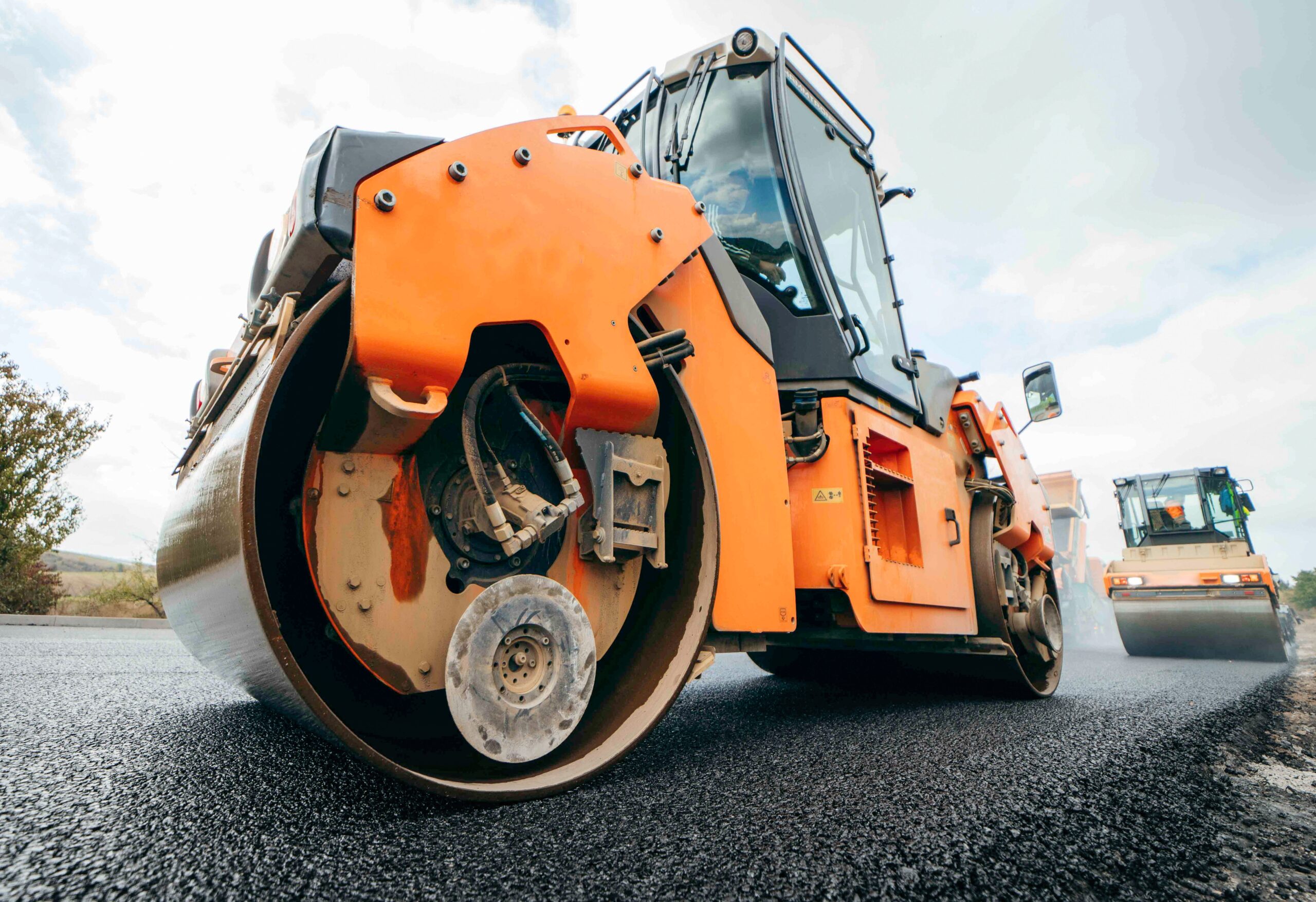
Frequently Asked Questions
1. How often should I inspect my asphalt surfaces for damage?
It’s advisable to inspect your asphalt surfaces at least twice a year, preferably in spring and fall, to identify any early signs of damage.
2. Can I repair asphalt cracks myself?
Minor cracks can be repaired using DIY methods, but for extensive damage or structural issues, it’s best to consult with professionals to ensure proper repair and prevent further deterioration.
3. How long does sealcoating last?
Sealcoating typically lasts 2 to 3 years, depending on traffic, weather conditions, and maintenance practices.
4. What causes potholes to form?
Potholes form when water infiltrates cracks in the asphalt, freezes and expands, and then thaws, weakening the surface and causing it to collapse under traffic pressure.
5. Is it better to repair or replace damaged asphalt?
If less than 25% of the surface is damaged, repair is usually cost-effective. However, if more than 25% is damaged, replacement may be more economical in the long run.

